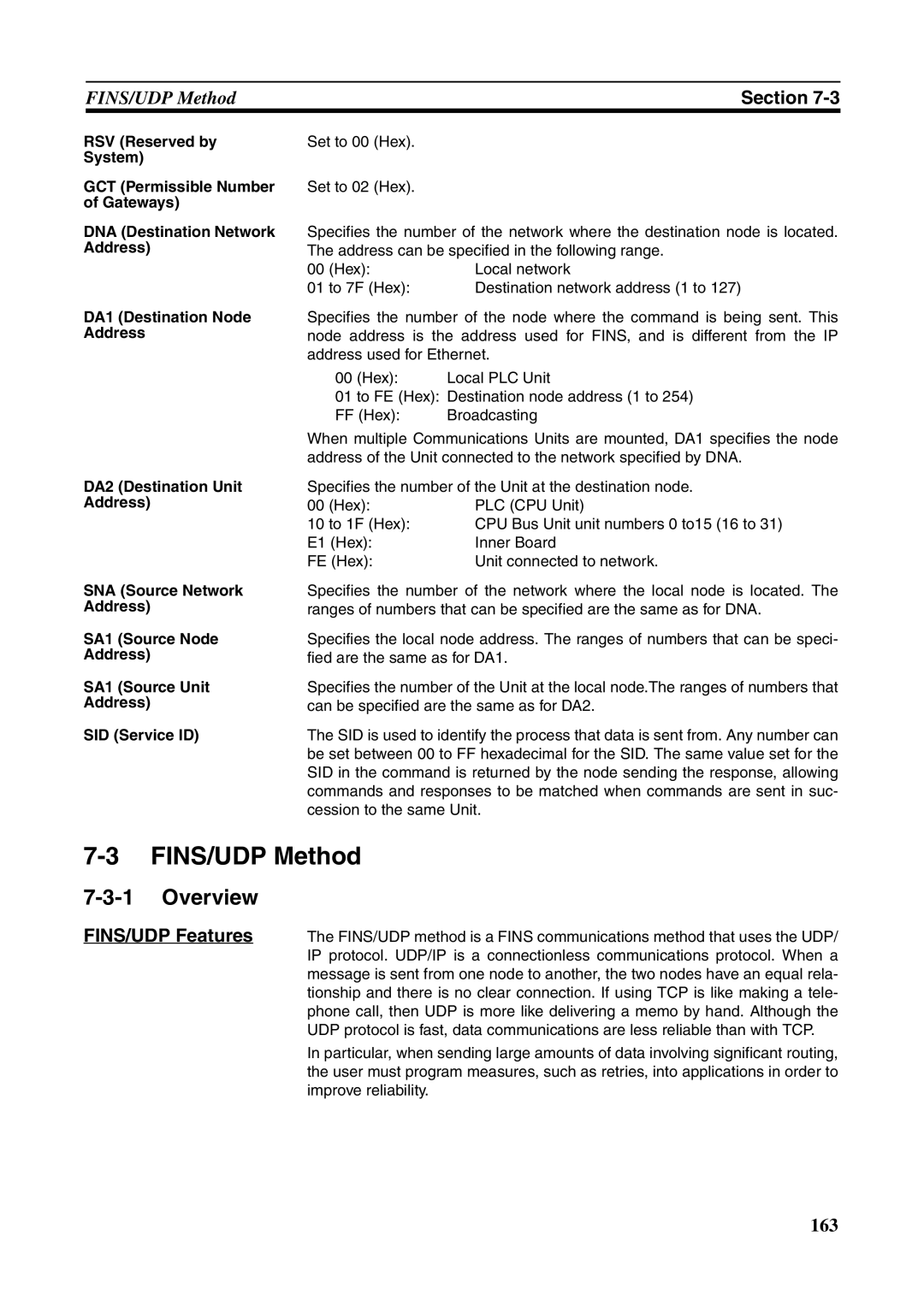FINS/UDP Method | Section |
RSV (Reserved by
System)
GCT (Permissible Number of Gateways)
DNA (Destination Network Address)
DA1 (Destination Node Address
DA2 (Destination Unit Address)
SNA (Source Network Address)
SA1 (Source Node
Address)
SA1 (Source Unit
Address)
SID (Service ID)
Set to 00 (Hex).
Set to 02 (Hex).
Specifies the number of the network where the destination node is located. The address can be specified in the following range.
00 (Hex): | Local network |
01 to 7F (Hex): | Destination network address (1 to 127) |
Specifies the number of the node where the command is being sent. This node address is the address used for FINS, and is different from the IP address used for Ethernet.
00 (Hex): | Local PLC Unit |
01 to FE (Hex): | Destination node address (1 to 254) |
FF (Hex): | Broadcasting |
When multiple Communications Units are mounted, DA1 specifies the node address of the Unit connected to the network specified by DNA.
Specifies the number of the Unit at the destination node.
00 (Hex): | PLC (CPU Unit) |
10 to 1F (Hex): | CPU Bus Unit unit numbers 0 to15 (16 to 31) |
E1 (Hex): | Inner Board |
FE (Hex): | Unit connected to network. |
Specifies the number of the network where the local node is located. The ranges of numbers that can be specified are the same as for DNA.
Specifies the local node address. The ranges of numbers that can be speci- fied are the same as for DA1.
Specifies the number of the Unit at the local node.The ranges of numbers that can be specified are the same as for DA2.
The SID is used to identify the process that data is sent from. Any number can be set between 00 to FF hexadecimal for the SID. The same value set for the SID in the command is returned by the node sending the response, allowing commands and responses to be matched when commands are sent in suc- cession to the same Unit.
7-3 FINS/UDP Method
7-3-1 Overview
FINS/UDP Features
The FINS/UDP method is a FINS communications method that uses the UDP/ IP protocol. UDP/IP is a connectionless communications protocol. When a message is sent from one node to another, the two nodes have an equal rela- tionship and there is no clear connection. If using TCP is like making a tele- phone call, then UDP is more like delivering a memo by hand. Although the UDP protocol is fast, data communications are less reliable than with TCP.
In particular, when sending large amounts of data involving significant routing, the user must program measures, such as retries, into applications in order to improve reliability.
163
